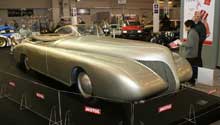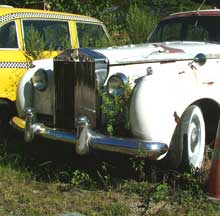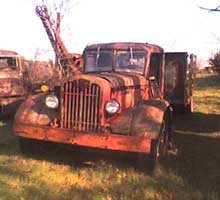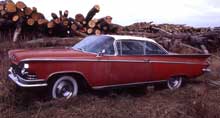Retromobile 35
This year marks the 35th Rétromobile show held in Paris at the Porte de Versailles. Rétromobile, the largest indoor old car event in Europe, occurred a fortnight earlier than in the past, due to scheduling conflicts at the exposition grounds.
Rétromobile is not just a European Hershey held indoors. The formula does not really translate to any other venue. To be sure, there are vendors of automobile components and ephemera: tools, polish, car covers, leather outfits, pedal cars and model cars. If you're restoring a French car, you'll be happy to find an engine for your Chapuis-Dornier or a radiator for your Citroën. You can even buy an electric power steering kit for your Delahaye.
But there are also high-end collector car dealers with some mammoth motorcars, and auto manufacturers as well. At one time, the French Big Three were stalwarts, but Renault pulled out some years ago. Peugeot and Citroën are faithful followers, though, the former showing off a 602 Eclipse and the latter touting 40 years of the SM and GS. Mercedes-Benz celebrated the legend of the gull wing (which the French call "butterfly doors"). BMW/Mini pulled out this year, replaced by Mazda, which had some seldom-seen models on display. Alfa-Romeo, too, was a welcome surprise, celebrating its centenary. Also with a presence was the German gearbox maker ZF.
It's the clubs that add enthusiast depth to Rétromobile, organizations like Amis de Delage and Club Vedette, the latter with a V8-engined Simca Chambord. Morgan France had a strong presence, but their kinship to the 124 Spider group was somewhat of a mystery.
There's always an auction at Rétromobile, in recent years conducted by Bonhams. This year's headliner was the Bugatti from the Lake, a Brescia rescued from the depths of Lake Maggiore near the Swiss-Italian border. An incomplete car, it was nonetheless sold for €260,500 ($375,120), to a buyer who has promised to preserve it.
There are always centerpiece displays at Rétromobile. This year celebrated two centuries of urban transportation, corraling a flock of microcars and a vintage DeDion bus. Another display demonstrated the intricacies of filming action scenes with automobiles.
My favorite, however, was La Baleine, the whale-like creation of French artist Paul Arzens. Constructed in 1938 (take that, Harley Earl!), it shows subtle clues of its origin as a 1926 Buick.




